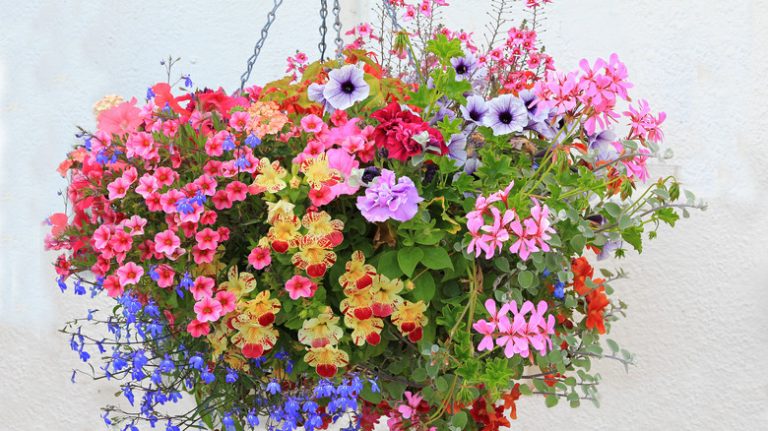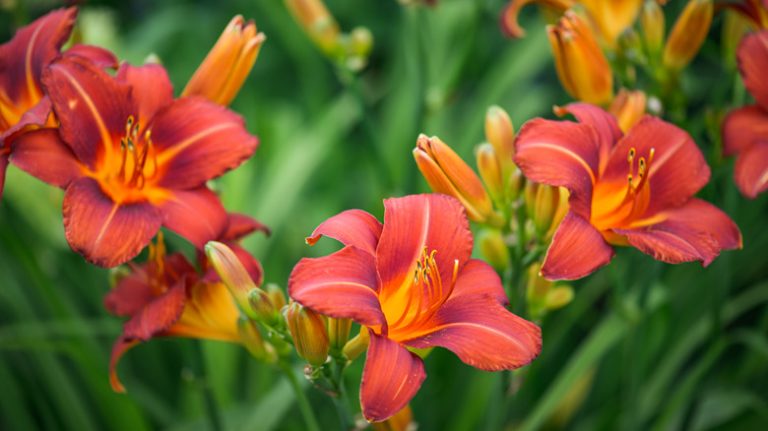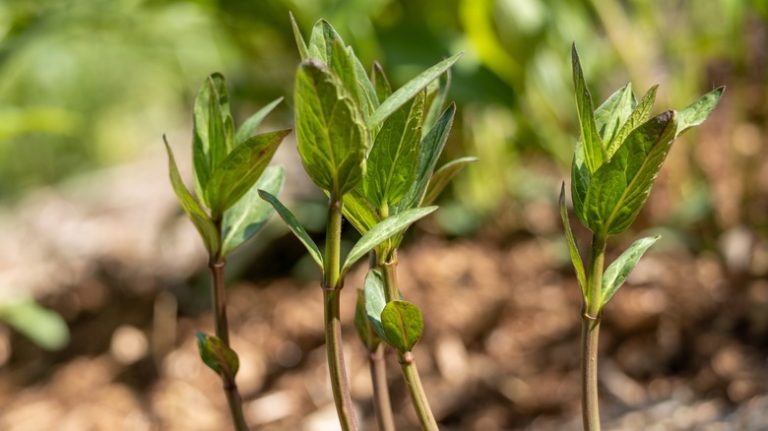If you have daffodil bulbs planted in your garden and they have been blooming for a few years in their current location, you may be wondering when is a good time to move them. Daffodils are spring-flowering bulbs that are known for their vibrant yellow, white, and sometimes even blue blooms. They can be lifted and divided after their foliage has died back in late spring or early summer. This is usually the best time to divide daffodil bulbs, as they will have stored up enough energy over the winter and will be ready to bloom again next year.
Dividing daffodil bulbs is a good way to care for overcrowded clumps and to increase your stock of these beautiful flowers. It’s also a good opportunity to transplant your daffodils to a different area of your garden or to share them with friends and family. When dividing, make sure each bulb has a small piece of the basal plate attached to it, as this is where the new flowers will form next year.
If you are wondering how to move daffodil bulbs, first lift them carefully from the ground, taking care not to damage the bulbs or their foliage. Shake off any loose soil and separate the bulbs. You can then replant them immediately, or if you don’t have a suitable spot prepared, you can store them in a cool, dry place until you are ready to transplant them. Remember to label the bulbs if you are storing them, so you know what they are and where they came from.
In summary, daffodils can be divided and moved after their foliage has died back in late spring or early summer. This is the best time to transplant them or share them with others. Taking care of your daffodil bulbs, dividing them every few years, and replanting them in a good location will ensure that they continue to bloom and bring joy to your garden for many years to come.
Spring bulbs to lift and divide
If you have daffodils, crocus, hyacinth, or any other spring-flowering bulbs in your garden, you may need to lift and divide them at some point. This is especially important if the bulbs have become overcrowded and are no longer blooming as well as they used to.
The best time to lift and divide daffodil bulbs is after the foliage has died back, usually in late spring or early summer. You can also lift and divide them in the fall, but be sure to do it before the bulbs start to form new roots.
To lift the bulbs, use a garden fork or trowel to carefully dig around the bulbs, being careful not to damage them. Lift the bulbs out of the ground and gently shake off any excess soil. If the bulbs are clumped together, carefully separate them so that each bulb is by itself.
When dividing bulbs like daffodils, it’s a good idea to separate any small bulbs that have formed from the main bulb. These small bulbs will take a few years to reach maturity and bloom, but dividing them will help prevent overcrowding and ensure a good display of flowers in the future.
After dividing the bulbs, you can either replant them immediately or store them in a cool, dry place until the ideal planting time. Daffodil bulbs, in particular, can be kept out of the ground for several months without any harm.
When replanting the bulbs, choose a well-drained area with full sun or partial shade. Dig a hole that is two to three times deeper than the height of the bulb and place the bulb in the hole, pointy end up. Backfill the hole with soil, firming it gently around the bulb.
After transplanting, be sure to water the bulbs thoroughly to help them establish their roots. Then, continue to water them regularly throughout the growing season, especially during dry spells. Applying a balanced fertilizer once or twice a year will also provide the bulbs with the nutrients they need to bloom and grow.
By lifting and dividing your spring bulbs, you can rejuvenate the plants and ensure they continue to bloom their best. So, if you notice your daffodils, crocus, or hyacinth are not flowering as well as they used to, it may be time to give them some care and attention by dividing and transplanting their bulbs.
Crocus
The crocus is a small spring-flowering bulb that produces beautiful blooms in a variety of colors, including yellow, purple, and white. These bulbs can be replanted and divided to increase their numbers and start new plants.
When it comes to planting crocus bulbs, the best time to do so is in the fall, about 6-8 weeks before the first frost. This allows the bulbs enough time to establish roots before the winter sets in. When planting, make sure to choose a location that receives full sun or partially shaded area.
After planting, crocus bulbs will usually bloom in the following spring, around the same time as daffodils and grape hyacinths. The flowers don’t last for long, but they bring a burst of color to the garden. Once the blooms fade and the foliage turns yellow, it’s time to lift and divide the bulbs.
To divide crocus bulbs, carefully lift them from the ground using a garden fork or trowel. Gently separate the smaller bulblets from the main bulb and replant them in a new area. This helps to prevent overcrowding and allows the plants to continue growing and flowering properly.
It’s important to note that crocus bulbs should be divided every three to four years to keep them healthy and blooming. This is typically done in late summer or early fall, after their foliage has died back. Storing the bulbs in a cool, dry place until the following planting season also helps ensure their success.
When caring for crocuses, it’s important to provide them with good drainage and avoid overwatering. These bulbs do well in rock gardens, borders, or naturalized areas where they can spread and naturalize over time. They also make great companions for other early spring bloomers like daffodils, aconite, and snowdrops.
In summary, crocuses are a beautiful addition to any garden. By planting them at the right time and dividing them when needed, you can enjoy their vibrant colors and delicate blooms for years to come.
Daffodils
Transplanting daffodil bulbs is a common practice among gardeners. These beautiful yellow flowers are a favorite in many gardens, and their bulbs can be moved to different locations for a variety of reasons.
There are specific times when daffodil bulbs should be moved. In general, it’s best to transplant them either in early spring after the flowers have finished blooming or in late summer to early fall before the first frost. This allows the bulbs to establish themselves in their new area before winter comes.
If you notice that your daffodils are becoming overcrowded or spreading too much in one area, it’s a good sign that they need to be divided. Daffodils should be divided every three to five years to maintain their health and ensure continuous blooming.
When dividing daffodils, carefully lift the bulbs using a garden fork or trowel. Gently shake off any excess soil and separate the bulbs into smaller clumps. Make sure each division has enough foliage and roots to support itself. The divided bulbs can then be replanted in their new location.
Caring for daffodils in winter is important. After the foliage has turned yellow and begun to fade, it should not be cut back immediately. The leaves should be allowed to wither naturally, as they provide nutrients to the bulbs for the following year’s bloom. Once the foliage has died back, it can be safely removed.
In addition to daffodils, other spring-flowering bulbs such as hyacinth, crocus, grape hyacinth, aconite, and lily of the valley can also be transplanted in a similar manner.
If you’re not sure where to move your daffodil bulbs, consider a location where they will receive full or partial sunlight and well-drained soil. Daffodils can tolerate some shade but prefer sunnier spots for optimal blooming.
Now that you know how and when to transplant daffodil bulbs, you can enjoy the vibrant yellow flowers in different areas of your garden and prevent overcrowding. Happy planting!
Grape hyacinth
Grape hyacinth bulbs, also known as Muscari, are small spring-flowering bulbs that produce clusters of vibrant blue flowers. They are easy to care for and can be planted in both sunny and shady areas of the garden.
When it comes to caring for grape hyacinth bulbs, there are a few important things to keep in mind. Firstly, they should be planted in the fall, around the same time as daffodils and crocuses. This will give the bulbs enough time to establish themselves before the winter sets in.
It’s also important to choose a good planting location for your grape hyacinths. They prefer well-draining soil and can tolerate a range of soil types, from sandy to clay. However, they don’t like to be planted in areas that get too wet, as this can cause the bulbs to rot.
When the flowers fade and the foliage starts to yellow, you can lift the bulbs and move them to a new location if desired. The best time to do this is in the late spring or early summer, after the foliage has completely died back.
To transplant grape hyacinth bulbs, gently dig them up using a garden fork or trowel. Be careful not to damage the bulbs or their roots. Once lifted, you can divide the bulbs if they have become overcrowded, which will allow them to produce more flowers in the coming years.
When dividing grape hyacinth bulbs, separate the small offsets from the larger ones. Replant them in a new area of the garden, making sure to give them enough space to grow.
If you don’t want to divide your grape hyacinth bulbs, you can also store them for future planting. After lifting the bulbs, remove any excess soil and allow them to dry out in a cool, dark place for a few weeks. Once dry, you can store them in a paper bag or mesh bag in a cool, dry location until you’re ready to plant them again.
Grape hyacinth bulbs are generally low-maintenance and don’t require much feeding or watering. However, if you want to give them a boost, you can apply a slow-release fertilizer in the early spring, just as the new growth starts to emerge.
In conclusion, grape hyacinth bulbs are a beautiful addition to any garden. With the right care and attention, they will reward you with years of blooms. Whether you choose to divide them or simply transplant them to a new area, you can enjoy their vibrant blue flowers and sweet fragrance year after year.




